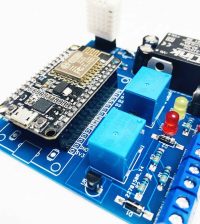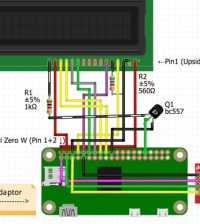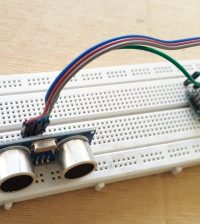- makeITcircular 2024 content launched – Part of Maker Faire Rome 2024Posted 2 weeks ago
- Application For Maker Faire Rome 2024: Deadline June 20thPosted 2 months ago
- Building a 3D Digital Clock with ArduinoPosted 7 months ago
- Creating a controller for Minecraft with realistic body movements using ArduinoPosted 7 months ago
- Snowflake with ArduinoPosted 8 months ago
- Holographic Christmas TreePosted 8 months ago
- Segstick: Build Your Own Self-Balancing Vehicle in Just 2 Days with ArduinoPosted 8 months ago
- ZSWatch: An Open-Source Smartwatch Project Based on the Zephyr Operating SystemPosted 9 months ago
- What is IoT and which devices to usePosted 9 months ago
- Maker Faire Rome Unveils Thrilling “Padel Smash Future” Pavilion for Sports EnthusiastsPosted 10 months ago
New Linux SBCs to Watch in 2019

A few days ago Linux.com published an interesting post about a top 10 list of linux-based hacker boards to watch this year.
SBC market is growing year by year and the number of different vendors and models has exploded thanks in part to the rise of community-backed, open-spec SBCs.
Below I’ll try to quickly summarize the main features of each SBC in the top 10 list:
- UP Xtreme: it features Intel’s 8th Gen Whiskey Lake-U CPUs, which maintain a modest 15W TDP while boosting performance with up to quad-core, dual threaded configurations. The SBC supports up to 16GB DDR4 and 128GB eMMC and offers 4K displays via HDMI, DisplayPort, and eDP. Other features include SATA, 2x GbE, 4x USB 3.0, and 40-pin “HAT” and 100-pin GPIO add-on board connectors.
- Jetson Nano Dev Kit: Nvidia just announced a low-end Jetson Nano compute module that’s sort of like a smaller (70 x 45mm) version of the old Jetson TX1. It offers the same 4x Cortex-A57 cores but has an even lower-end 128-core Maxwell GPU. The module has half the RAM and flash (4GB/16GB) of the TX1 and TX2, and no WiFi/Bluetooth radios. Like the hexa-core Jetson TX2, however, it supports 4K video and the GPU offers similar CUDA-X deep learning libraries.
- Coral Dev Board: Google’s very first Linux maker board features an NXP i.MX8M and Google’s Edge TPU AI chip—a stripped-down version of Google’s TPU Unit is designed to run TensorFlow Lite ML models. The $150, Raspberry Pi-like Coral Dev Board was joined by a similarly Edge TPU-enabled Coral USB Accelerator USB stick. These will be followed by an Edge TPU based Coral PCIe Accelerator and a Coral SOM compute module. All these devices are backed with schematics, community resources, and other open-spec resources.
- SBC-C43: Seco’s commercial, industrial temperature SBC-C43 board is the first SBC based on NXP’s high-end, up to hexa-core i.MX8. The 3.5-inch SBC supports the i.MX8 QuadMax with 2x Cortex-A72 cores and 4x Cortex-A53 cores, the QuadPlus with a single Cortex-A72 and 4x -A53, and the Quad with no -A72 cores and 4x -A53. There are also 2x Cortex-M4F real-time cores and 2x Vivante GPU/VPU cores.
- Nitrogen8M_Mini: The open-spec Nitrogen8M_Mini is the first SBC to feature NXP’s new i.MX8M Mini SoC. The Mini uses a more advanced 14LPC FinFET process than the i.MX8M, resulting in lower power consumption and higher clock rates for both the 4x Cortex-A53 (1.5GHz to 2GHz) and Cortex-M4 (400MHz) cores. The drawback is that you’re limited to HD video resolution. A Nitrogen8M_Mini SOM module with similar specs is also in the works.
- Pine H64 Model B: Pine64’s Raspberry Pi semi-clone, which recently went on sale for $39 (2GB) or $49 (3GB), showcases the high-end, but low-cost Allwinner H64. The quad -A53 SoC is notable for its 4K video with HDR support. Images include Android 7.0 and an “in progress” Armbian Debian Stretch.
- AI-ML Board: Arrow’s AI-ML Board features the low-power i.MX8X, which offers up to 4x 64-bit, 1.2GHz Cortex-A35 cores, a 4-shader, 4K-ready Vivante GPU/VPU, a Cortex-M4F chip, and a Tensilica HiFi 4 DSP. The open-spec, Yocto Linux driven AI-ML Board is targeted at low-power, camera-equipped applications such as drones. Cameras are controlled via the 96Boards 60-pin, high-power GPIO connector, which is joined by the usual 40-pin low-power link.
- BeagleBone AI: It features the AI firepower enabled by the SoC’s dual TI C66x DSPs and four embedded-vision-engine (EVE) neural processing cores. BeagleBoard.org claims that calculations for computer-vision models using EVE run at 8x times the performance per watt compared to the similar, but EVE-less, AM5728. The EVE and DSP chips are supported through a TIDL machine learning OpenCL API and pre-installed tools.
- Robotics RB3 Platform (DragonBoard 845c): org has posted a DragonBoard 845c product page, and a compute module version is also said to be in the works. The 10nm, octa-core, “Kryo” based Snapdragon 845 is one of the most powerful Arm SoCs around. It features an advanced Adreno 630 GPU with “eXtended Reality” (XR) VR technology and a Hexagon 685 DSP with a third-gen Neural Processing Engine (NPE) for AI applications. The $449 and up RB3 kit also includes standard 4K video and tracking cameras, and there are optional Time-of-Flight (ToF) and stereo SLM camera depth cameras. The SBC runs Linux with ROS (Robot Operating System).
- Avenger96: the Avenger96 is a 96Boards CE Extended SBC aimed at low-power IoT applications. The Avenger96 runs Linux on the high-end STM32MP157 model, which has dual, 650MHz Cortex-A7 cores, a Cortex-M4, and a Vivante 3D GPU. The board also features 1GB of DDR3L, 2MB SPI flash, a power management IC, GbE, HDMI, micro-USB OTG, and dual USB 2.0 host ports. There’s also a microSD slot and the usual 40- and 60-pin GPIO connectors.
Please visit Linux.com for the original post and to find out more information.















